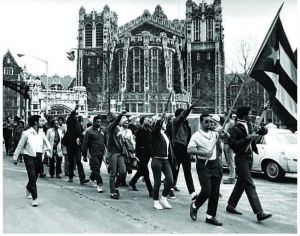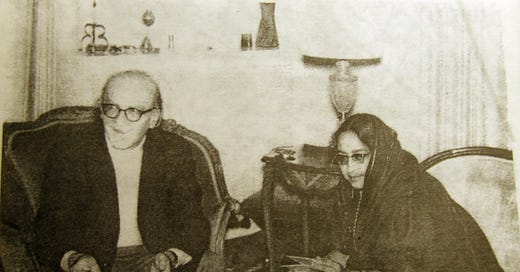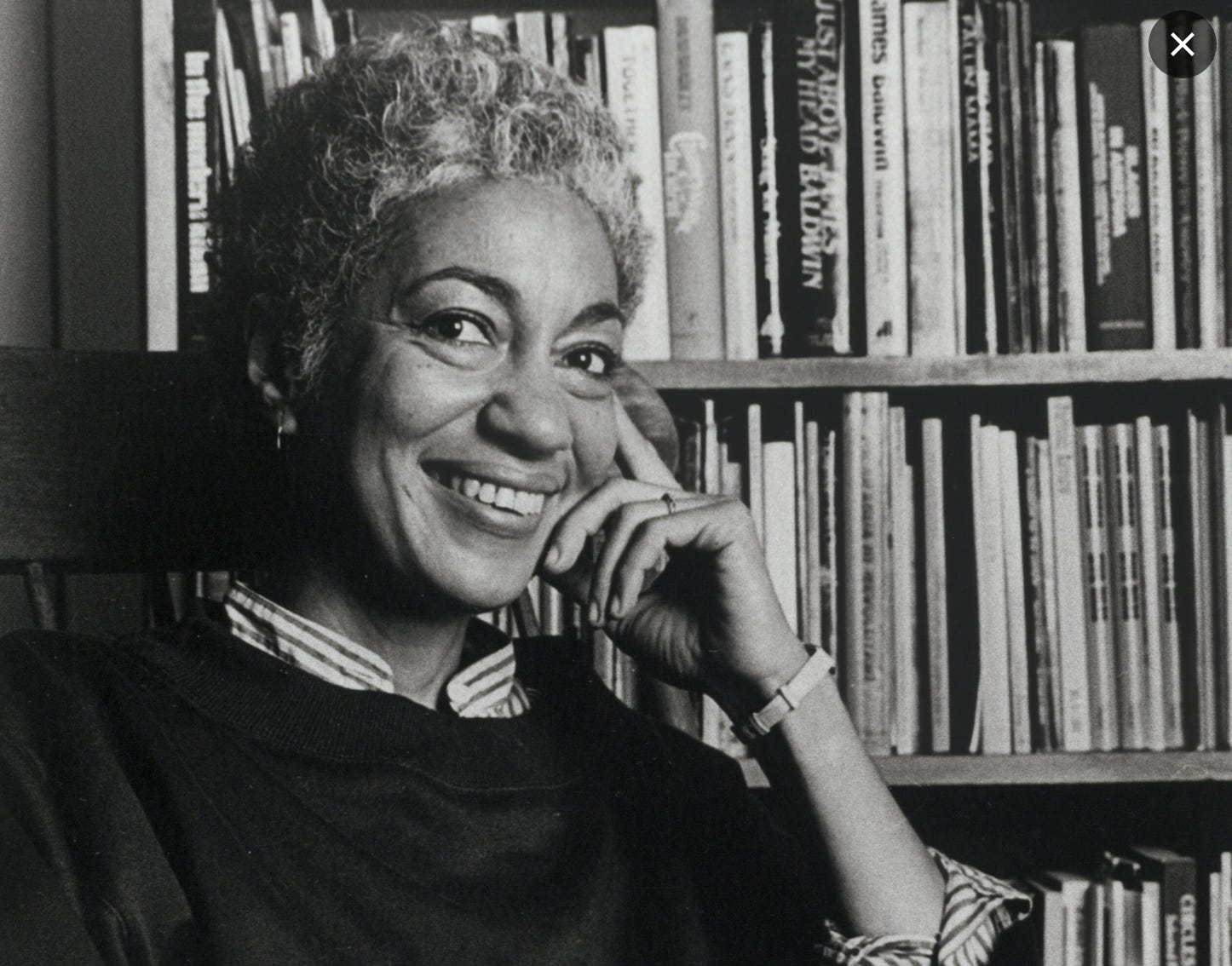archive soup: the historical fetishization of Bengali girls in classic literature, the importance of being a menace, "Ladybird" is racist, and flowers in our hair
february week 1, 2024
Hello friends! How are you doing? I’m currently typing this at my local library and the sun has finally decided to come out. If you would like to support me, it would help immensely by sharing, commenting, and becoming a paid subscriber. Thanks!
Reading
Lately, I’ve been reading Na Hanyate (It Does Not Die) (1974), a Bengali book written by Maitreyi Devi. But for me to tell you about this story, I must discuss La Nuit Bengali (Bengal Nights) (1933) written by Romanian philosopher, Mircea Eliade.
Bengal Nights is an autobiographical account based on his experience as a 24-year-old when he visited Calcutta, India. He worked for acclaimed Bengali philosopher, Surendranath Dasgupta, and fell in love with his 16-year-old daughter, Maitreyi Devi. In his story, Eliade names himself as Allen, a French man. Young Devi, who already was a revered poet and philosopher as she was the protege of Rabinath Tagore, became the object of Eliade’s, or Allen’s, fantasy. After their passionate love affair (I say that very loosely), they are caught and Devi’s father throws Allen/Eliade out of the house. Throughout the novel, Eliade portrays them as “star-crossed lovers” who are separated due to the archaic practices of Indian society and cultural differences.
I only read excerpts of this autobiographical novel out of curiosity years ago but squirmed painfully when reading his revolting description of young Devi. Eliade’s novel oozes gross orientalist fetishization of a child as it was written with colonial prejudice disguised as “forbidden love”, minimizing Devi into a caricature of a Tantric erotic goddess. It astounds me how European men can commodify brown women—simultaneously sexualizing and fetishizing us while disregarding us with contempt and disgust. Ultimately, Bengal Nights garnered Eliade’s prestige, reputation, and wealth.
I remember my heart feeling hurt for young Devi, wondering how she really felt, I told myself to forget this book and never look back until that is when I came across Devi’s novel. As it turns out, Maitreyi never even knew Eliade wrote a book about their relationship until years after his novel was published. She first learned of Eliade's novel from her father, when he visited Europe in the 1930s. He ran into Romanians who, upon hearing her name, claimed to know who she was. (Can you imagine??) After hearing from her father, Devi was shaken by his depictions as Eliade’s narrative emphasized heavily a perverse and sexual relationship between them. In reality, their relationship was never physical. Adding salt to the wound, Eliade used her real name (even naming the book after her when he published it in Romania) while giving himself a pseudonym. For years, Devi had no idea that a misconstrued story written about her most intimate time as a teen had become a European classic and a public spectacle in the literature world. Her existence had become the colonizer’s fantasy.
Horrified by the distortions of her experience, Devi published It Does Not Die in 1974, a response to Eliade’s novel and proclaiming her story to the world, forty-four years after the events. (So badass.) After she published the novel, she decided to meet him, unlike cowardly Eliade who had never made any efforts to contact her, and made him promise not to publish his novel in English until after her death. When recalling their encounter after decades, she said:
"I will sue him for libel. You may convey to him my views and also remind him his word of honour. Eventually he promised to me that he will add an epilogue in the next edition of Maitreyi [the original Romanian title of his novel] saying that though some incidents described in the book are true some are not. He told me he will send me this epilogue to check. But as usual he has not kept this promise also. Here was his opportunity to say that most of the things he wrote about me were not true and absolve me of the guilt. It is not true that I visited him at night. Why does he not keep his word? When I went to meet him after forty three years propelled by an undefinable force...he misconstrued my yearning to see him.”
I am currently reading Devi’s It Does Not Die, and it has shaken me to my core. Her words are strikingly bold and raw. Reading her story, I feel her breathing. Recalling the days of her youth, she does not refrain from her truth of the complexities of being a teenage girl full of passion and yearning. To describe her novel as a mere response to Eliade’s novel is a disservice to Devi’s story as she writes with no apology. Her story is filled with sincerity and poetic beauty as we see a young girl who seeks to be liberated from the restrictiveness of her everyday life, and unfortunately, like most vulnerable young girls, tries to seek it in a love affair with a man who gives her an empty promise. Sally Eckhoff says it best, “Eliade’s book is wrenching. Devi’s is musical.”
While Mircea Eliade has always refused to ignore the reality of Devi and blinded himself to a harmful fantasy of her and her land, It Does Not Die is an honest exploration of her desires, memories, and investigation of youthful self-delusion, and ultimately an ode to understanding the truth in misguided love. In the novel, she writes:
“Mircea, I am telling you, fantasy is beautiful and truth is more beautiful, but half-truth is terrible. Your book is a nightmare for me. I was a simple little girl who sometimes played philosopher. I was no enigma. The mystery is your creation. You love the fantastic and unreal. But now I have really come, to perform an impossible deed.”
Bengal Nights was released as a film starring Hugh Grant in 1988, and Devi was deeply hurt. She fought against the release of the movie but was ignored.
I am not yet finished with her novel, but I am dazzled. Bengali women will forever have a special place in my heart. May all the Maitreyis in the world get justice.
As Devi said in her book, "I have made you the pole star of my life, I will never again lose my way on this sea voyage."
Read the following to get a deeper understanding (please do not read Bengal Nights):
It Does Not Die by Maitraye Devi (currently reading!)
A Terrible Hurt: The Untold Story Behind the Publishing of Maitreyi Devi- Ginu Kamani
Maitreyi Devi and Mircea Eliade: One moment as fractal- Geoffrey James Aguirre
Engaging
Lately, I’ve been reading everything and anything June Jordan wrote. June Jordan was born and raised in Harlem, New York City, to Jamaican immigrant parents.
Jordan was known as the “Poet of the People,” as she consistently professed a vision of liberation for all people. She used her writing to call attention to the people’s struggle, saying “Poetry is not a shopping list. Poetry is a political action undertaken for the sake of information, the faith, the exorcism, and the lyrical invention that telling the truth makes possible.” But she also never shied away from acknowledging the painful contradictions that people try to ignore because of our discomfort as Black and brown people. She wrote in her essay, I am seeking an attitude:
“Or why do I write without hesitation about the injustice that freed the cops who beat up Rodney King, and then I keep to myself my qualms about the fact that he has been charged with beating up his wife? Maybe it has to do with the human necessity of pride.”
June Jordan was also an innovative educator, as she was at the forefront of movements transforming academic pedagogies and reforming educational institutions across the country that we bear the fruits of today.
In 1966*, a program at City College called SEEK was created to provide academic support for working-class students in efforts to expand access to higher education. (Fun fact: I was also a student in the SEEK program in college!!)
(1966*: It is key to understand the historical landscape. SEEK was established only two years after the enactment of the Civil Rights Act in 1964, prohibiting segregation. A year prior, Malcolm X was assassinated in 1965, and two years after SEEK was formed, MLK Jr. was murdered.)
Jordan joined acclaimed feminist writers, Audre Lorde, Adrienne Rich, and Toni Bambara, to teach the Black and brown students of SEEK. Inspired by her own experience after dropping out of Barnard as an undergraduate, (“Notes of a Barnard Dropout”) to develop Black feminist pedagogy. Years before Paulo Freire’s theory of “pedagogy of the oppressed” was popularized, Jordan was already connecting learning to revolutionary frameworks by using works of Black and brown poets, hip hop, and even African American vernacular and lexicons in her philosophy to redefine literature, literacy, and learning.
As legal segregation had just ended (transpiring into de facto segregation), this program was a groundbreaking educational opportunity. However, immediately after SEEK was enacted as a pilot program, the university’s (white) faculty members accused the admissions of Black and brown students of “killing higher education and lowering academic standards” and referred to the arrival of the new students “in the metaphors of disease—of debility, decay, paralysis, contagion, even of mortality rates.” (Side note: This reminds me of the opening scene in Ladybird when Christina’s mother berates her, saying she’ll probably end up going to City College and then jail.)
When the university threatened to cut funding and close down SEEK, Jordan rallied and helped organize student strikes and class boycotts. Jordan recalled, “Nobody was eating, sleeping, thinking, or moving around anything except the issues at stake.” Jordan directly addressed the strike demands by writing in her book of essays Civil Wars (which I’m currently reading!):
“For Blacks, there is nothing optional about ‘Black Experience’ and/or ‘Black Studies.’ We are that experience, and we must study, must know ourselves.”

In the ‘90s, she started Poetry for the People, a pedological network and program at the University of California, Berkeley. She developed a democratic curriculum that taught students to envision and practice alternatives to structures of injustice. When describing this philosophy, she said, “This class has something to teach America.”
Poetry for the People was more than a program, but was a blueprint, literally. She collaborated with her students and published a guidebook, Poetry for the People : A Revolutionary Blueprint, a collection of reading lists, syllabi, poetry, and activities presented as a “how-to” guide for others interested in democratizing poetry. This guidebook emerged as a national phenomenon, inspiring educators to design intersectional curricula across America. She engaged with her students in leading their own workshops to create fundamental change by bringing poetic pedagogy into K-12 schools, community centers, and churches, ultimately creating a network of communities working to democratize language through their learning. ….this is praxis, people.
Jordan used her responsibility as an educator to enact critical consciousness in her students to create necessary social change while forever changing the course of literary and educational history forever. What a woman.
June Jordan also had an incredibly difficult life full of grief as she battled breast cancer for a decade, and was sexually assaulted by one of the leaders of the NAACP, but was shunned by her community members as a result of the rape. Jordan channeled her grief in her writings and teachings to enact a revolution.
I also recently read her poem, I Must Become a Menace to My Enemies, in which she teaches us the importance of fighting against our oppressors. (Reminds me of Maitreyi Devi menacing against the colonizers by constantly rallying for herself!) Since then, it has not left my mind. Something has shifted in my spirit since reading this poem. It has become a piece of my heart, my soul as June Jordan has radically emboldened me.
Even though June Jordan’s work made radical changes across movements (co-organizing with Malcolm X, rallying for queer rights, and more), it pains me to see how she is not remembered due to her rallying for Palestinians. In her poem, Moving Towards Home (1982), she wrote:
“I was born a Black woman and now. I am become a Palestinian.”
Because of this, she paid significantly for taking a pro-Palestinian stand as a result, revealed that publishers refused to work with her. This may in part be the reason she is not as widely known as her peers, Adrienne Rich, Alice Walker, Toni Morrison, etc.
June Jordan died of breast cancer in 2002, aged 65. It does not go unnoticed how most Black feminist thinkers/writers have died from reproductive cancer like Audre Lorde, Pat Parker, Toni Bambara, and the list goes on.
Read these articles and June Jordan’s writings:
What We Are Teaching at CUNY: 1968-1974- Adrienne Rich
The Early Formations of Black Women’s Studies in the Lives of Toni Cade Bambara, June Jordan, and Audre Lorde- Conor Tomás Reed
Civil Wars- June Jordan (currently reading!)
Poetry for the People: A Revolutionary Blueprint- June Jordan
Life as Activism- June Jordan
Will always remember June Jordan forever. Will be a menace forever <3
Listening + Watching:
As I’ve been hungry to learn about June Jordan’s life, I was able to get an in-depth understanding of her life’s work thanks to writer and educator Breya Johnson’s incredible teach-in for Black Women Radicals!
Obsessing:
Lately, I’ve been obsessed with John Galliano’s most recent couture show for Maison Margiela, but mostly Pat McGrath’s incredible creative direction with the captivating alien makeup looks. Galliano and McGrath have always been an iconic duo, but this Spring’s look was….INCREDIBLE. On the models, McGrath created a porcelain look with shimmering glass skin, and bold eyeshadow that made them look unreal. But what caught my eye was actress Gwendoline Christie closing the show. Christie is remarkably tall, being 6′ 3”, and I found it incredible to see that the designer decided to put her in stiletto heels, exaggerating her height even more. From the way she moved effortlessly down the runway to her soaring over the crowd in such a majestic manner, all of it felt poetic. Beautiful show. Obsessed!!!
Loving:
Now that Spring is around the corner, I’ve been loving flower accessories in hair! It’s just so beautiful and joyous to look at and interesting how it translates into signals. Like in Hawaiian tradition, if you put a flower behind your right ear, it means you are single and if you put it behind your left ear, you’re in a relationship. In the Victorian era, floriography was used as a means of communication when restraint was highly imposed. In South Asian cultures, the type of flower acts as a spiritual connection. In indigenous Mexican cultures, flowers give spiritual energy to improve fertility. Flowers hold so much power! Can’t wait for spring to come <3
That’s all! What have you been reading, engaging, listening/watching, obsessed with, and loving lately? Do tell and comment below <3









